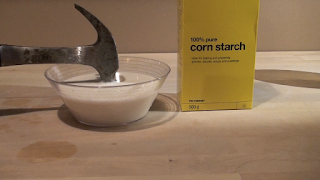I know the word can make you think this is a very complicated topic, but this is quite easy. There are liquids in nature, that if you apply pressure or you give it a hard hit, they will turn rigid and stiff as a solid, but when you touch it gently, the liquid will turn soft.
All fluids have a property known as
viscosity, which is the measurable “gooeyness” of the fluid or its
resistance to flowing.
The key to viscosity is how much
friction or resistance a substance has, for example, honey and ketchup are very
viscous, while water is not.
But first: What exactly is a
non-Newtonian fluid? Well, as its name says, it’s the opposite of a Newtonian
fluid.
A Newtonian
fluid is easy to understand; Newton defined it as the perfect fluid, where
its viscosity changes with temperature and if you apply pressure. So if you
have water at normal temperature and pressure, it will continue to act like a
liquid no matter how much you punch it.
Non-Newtonian
fluids, on the other hand, follow different rules. You just need to apply some
kind of force on it, like a punch, and it will change its viscosity in such a
way that it can change its state entirely.
Today I’m
going to show you an interesting experiment where you will be able to create
your own non-Newtonian fluid. There are lots of types but what we will create
today is called Oobleck.
Remember it is a
term for fluids that
change viscosity under stress. Stress is the force that helps the fluid flow,
as the particles prefer a layer of fluid between
them. But when they are squeezed together, friction will make the particles
move like a solid.
To make
this experiment you will need:
·
2
cups of cornstarch (maizena)
·
1
cup of water
Mix it till you feel de mass getting slimy, then enjoy hitting and playing with the oobleck. If you want you can add colorants and glitter.
I CHALLENGE you to send a video of the experiment to miss Helen and maybe earn some merit points or you can just have fun.
https://blog.craneengineering.net/what-are-newtonian-and-non-newtonian-fluids


